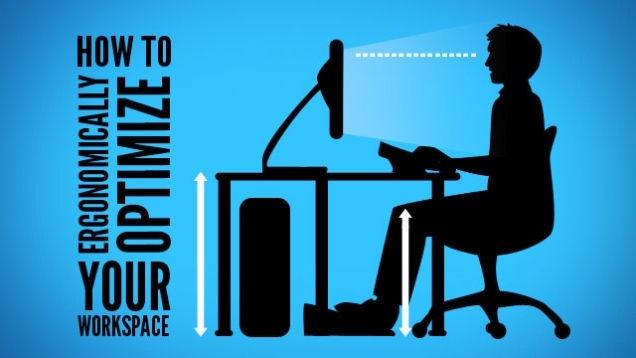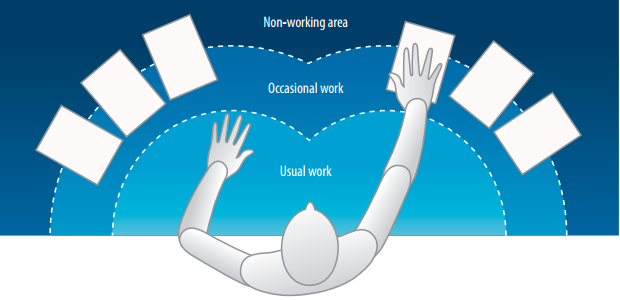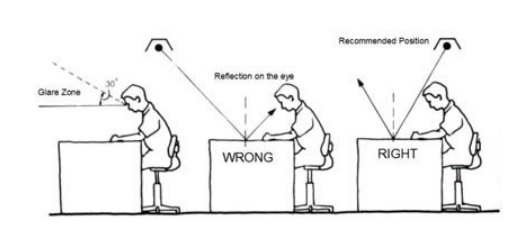Desk Setup
How To Set Up Your Desk

When working at a desk, try these suggestions for greater comfort:
1. Choose a desk that is the proper height for your body. All items on your desk should be within easy reach.
2. Your feet should be touching the floor, with your thighs and upper body forming an angle of 90 to 110 degrees.
3. Keep your upper body in a straight line with the head and neck upright and looking forward, not to the side. Avoid slouching over!
4. Adjust the height of your monitor using our monitor setup tips. Leaning your head forward can lead to headaches and neck pain.
5. When typing, keep your wrists straight, your upper body straight upright, and your forearms parallel to the floor.
6. When reading at your desk, prop items up with a bookstand or a paper holder to keep your eyes in the same neutral position you use to read documents on your computer monitor.
7. When talking on the phone, use a headset whenever possible--especially if you talk on the phone for prolonged periods. Holding the phone between your shoulder and cheek will only lead to neck pain and headaches.
8. Stand up and stretch your legs with a short walk about every 20 to 30 minutes.
9. Take micro-breaks often, stretching your neck, arms, wrists, back, and legs. Simple stretches include neck rotations, fist clenches, arm dangles, and shoulder shrugs.
10. If your eyes must concentrate on a particular object for long periods, relax your eye muscles by shifting your focus from objects close to you to objects that are farther away. This helps reduce eye strain.

Standing Work Stations
Decrease your risk for developing heart disease, blood clots in the brain, and certain types of cancer. A stand up (or standing) desk is a desk conceived for writing, reading, or working - while standing up.
Is a standing desk right for you? Find out more here.
Lighting
- Lights should be positioned more than thirty degrees above the line of sight and behind the person to avoid the incidence of direct or reflected light on the eyes.
- When lighting is improperly placed, it causes discomfort and a great eye wear.
- It is easier to move desks/tables for better positioning underneath the lighting, than to install new lighting.
- Workplace lighting is a key factor in an employee’s productivity and well-being.
- Speed, quality of work, downtime, absenteeism, and accident rates are all affected by workplace lighting conditions.
- Beneficial effects of bright light have been reported in the literature with a special emphasis on improving the conditions for night shift workers. Pulses of bright light exposure relieved subjective symptoms of distress and improved the mental state, alertness, and performance of night shift workers in various studies.
- With respect to alertness and speed of information processing, illumination with blue light (455 nm) proved to be more effective as compared to yellow light (580 nm) or white light, independent of its level of intensity.

